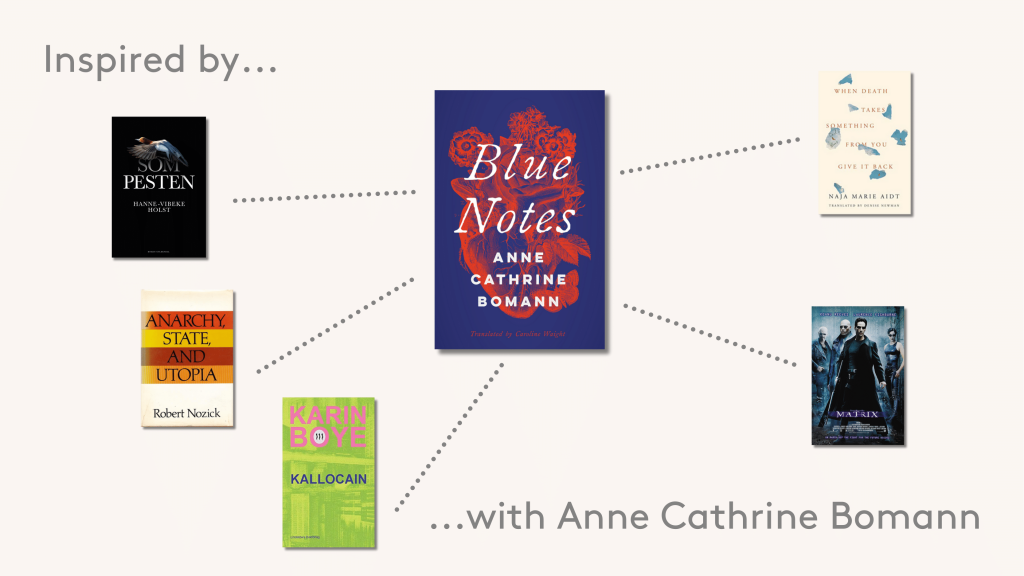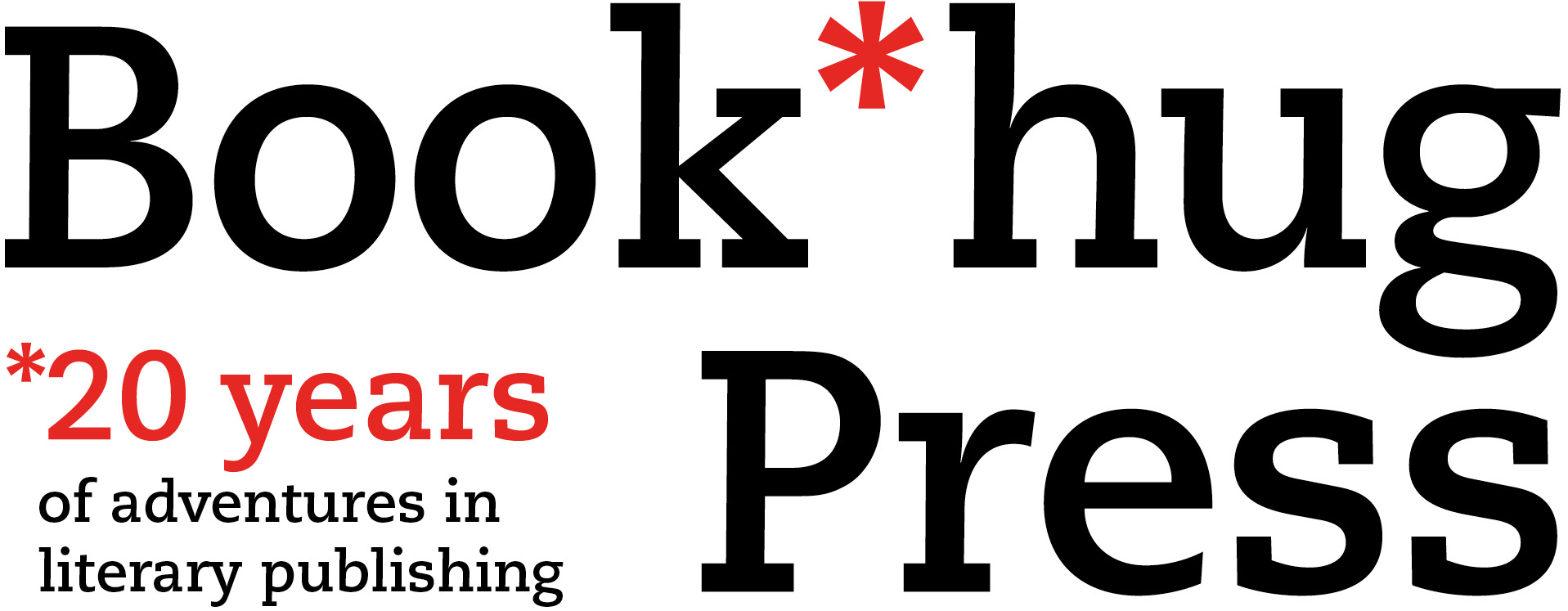Inspired by…with Anne Cathrine Bomann

Today, we’re excited to be sharing seven works that inspired Anne Cathrine Bomann in writing Blue Notes! Read on to see how this newly translated medical thriller was influenced by classic films, scientific studies, and more!
“The Dual Process Model of Coping with Bereavement: Rationale and Description” by Margaret Stroebe and Henk Schut
To start at the beginning: Blue Notes opens with a dedication to Rita, a colleague and friend of mine and who passed away while I was writing the book.
She was the one who first told me about the dual process model of coping with grief, when we worked at the same practice, and I was young and green, and she was old(er) and wise. She was herself a big inspiration to me and also supported my writing and cheered me on, passing around my debut novel Agatha to anyone she met.
The dual process model by Stoebe and Schut marked a paradigmatic shift in the way we look at bereavement. Before that, the consensus was that there were certain phases that one should go through (as if the grief would then be over with) whereas the new model makes more room for an individual mourning process oscillating between confronting the pain and avoiding it. That was a helpful way for me to think and talk to my clients about their mourning, for instance how it is okay to feel happy or even forget about the lost one once in a while, and equally okay to break down and cry even though months or years have gone by since the passing.
Som Pesten (Like the Plague) by Hanne-Vibeke Holst
As for the plot and the general idea for Blue Notes, I was inspired by Like the Plague by the Danish author Hanne-Vibeke Holst. I read the book on a holiday in Italy and really enjoyed its fast pace and the moral questions that it posed. It was written years before Covid-19 was even a thing, but now seems sort of prophetic in its examination of how we might react when a new virus suddenly spreads causing worldwide panic. Researchers have to act fast trying to come up with a cure, and one of the central questions in the book is how the West and WHO will handle the situation—will they take care of their own first and let the global south wait for the vaccines, or will the medicine be fairly distributed?
Recently, I was lucky enough to meet Hanne-Vibeke Holst and tell her how her work had in some ways inspired Blue Notes. She wrote down the title in a small, black book of things to remember and books to read—doesn’t get much better than that!
Anarchy, State and Utopia by Robert Nozick
I actually did not read Nozick’s work, but I read and heard about him. It was my partner, who is a philosopher like Nozick, who first told me about his experience machine. In short, it is the idea of a machine that can produce a simulated experience of reality filled with nothing but pleasurable activities. The choice then becomes: would we substitute our normal and sometimes difficult, painful and boring reality with the simulation if it were possible? It is a provoking thought experiment further explored in movies like The Matrix, and it captures some of the thoughts that I had while writing Blue Notes. I for one think that mourning our losses is an important part of life because the grief mirrors the love that we are also capable of feeling, but of course I can see the allure in just plugging into a trouble-free utopia and enjoying every last minute of life. But then again—what would that life be worth, really?
The Matrix, directed by Lana and Lilly Wachowski
A great classic and a movie that I have seen several times since was released in 1999. The first time was special, of course; the moment you realize it is all an illusion, and the world as we know it only exists in our minds? Chills down the spine!
In Blue Notes, Anna references the movie because she thinks there are similarities between taking the blue pill (meaning to choose to live in the illusion instead of waking up to the harsh reality of the dystopic world that the characters in Matrix actually live in) and taking Callocain. I think Anna puts it on point there, but then again, that’s her style.
Eternal Sunshine of the Spotless Mind, written by Charlie Kaufman and directed by Michel Gondry
A movie from 2004 that I saw when I was younger and came to think back on while writing Blue Notes. It is about a (former) couple who choose to have their memories erased so that they can forget they ever met. Again, there are some obvious parallels to Blue Notes where the new grief medicine Callocain works in part by dampening the feeling of sadness associated with memories of lost ones. So, a central question here is how much pain we human beings must tolerate; is emotional pain such as grief and heartache an important part of life, or should we try to get rid of as much of all that unpleasant stuff as possible? Can we have love without anger, fear, and eventually great sadness, and even if we could, should we take it?
When Death Takes Something From You Give It Back by Naja Marie Aidt
One of the most beautiful, heartbreaking and well-written books ever. Written by the Danish author Naja Marie Aidt, who tragically lost her son Carl in an accident and years later went on to write about it. The grief stole most of her words, so in the beginning, she just read other people’s works, and parts of these are included as a sort of choir in her book. Slowly the reader understands what happened, as Naja exposes more and more of the night where the phone rang with the devastating news about Carl. I carried the book with me when I first got it, but had to put it away several times while reading in public, because I couldn’t stop myself from crying. A must-read for anyone, punctuation mark, and even more so for anyone interested in loss, love, and mourning.
Kallokain by Karin Boye
Finally, the book that inspired the name of the grief medicine which is invented in Blue Notes. For a long time, I called the pill Sadonix a a play on ‘sad’ and the Danish word ‘niks’ which is slang for no, but I never really loved it. Then one day the accountant at my literary agency sent me an email about something else entirely and in the end suggested that I consider using Kallokain by Karin Boye as an inspiration for the pill. I didn’t know the book at the time, but it turns out that it is about yet another dystopian society, and that Kallokain is a sort of truth serum. I decided to slightly change the spelling, but keep the word as a sort of homage to Boye.
I realize now that I have quite a few dystopic, futuristic works on my list, but Blue Notes does take place in the future—when I wrote it, anyway. The story unfolds in 2024 and was published in Denmark in 2021, and I did invent a drug that does not yet exist and which might entail some very alarming side effects. Apart from that, Danish society is very much like the one I know and live in now, but still, it has been inspiring to look at other people’s visions of a possible future world gone wrong while writing.
Anne Cathrine Bomann lives in Copenhagen dividing her time between writing and working as a psychologist. She also played table tennis for Denmark and won the national championship twelve times. She is also the author of two poetry collections and the debut novel, Agatha, which became a word-of-mouth success following publication in Denmark and has now been translated into twenty-three languages.

